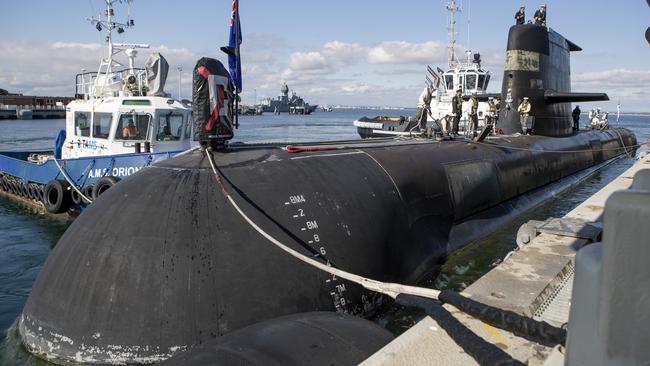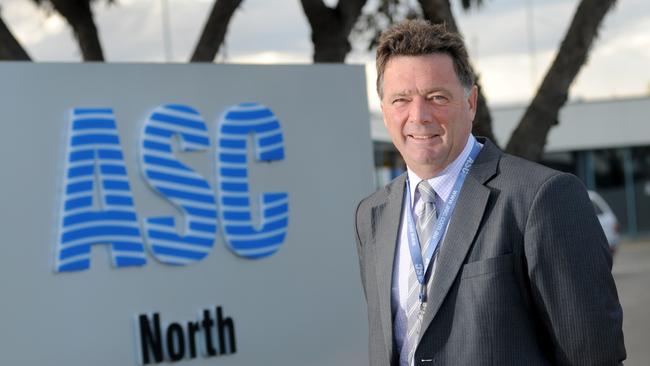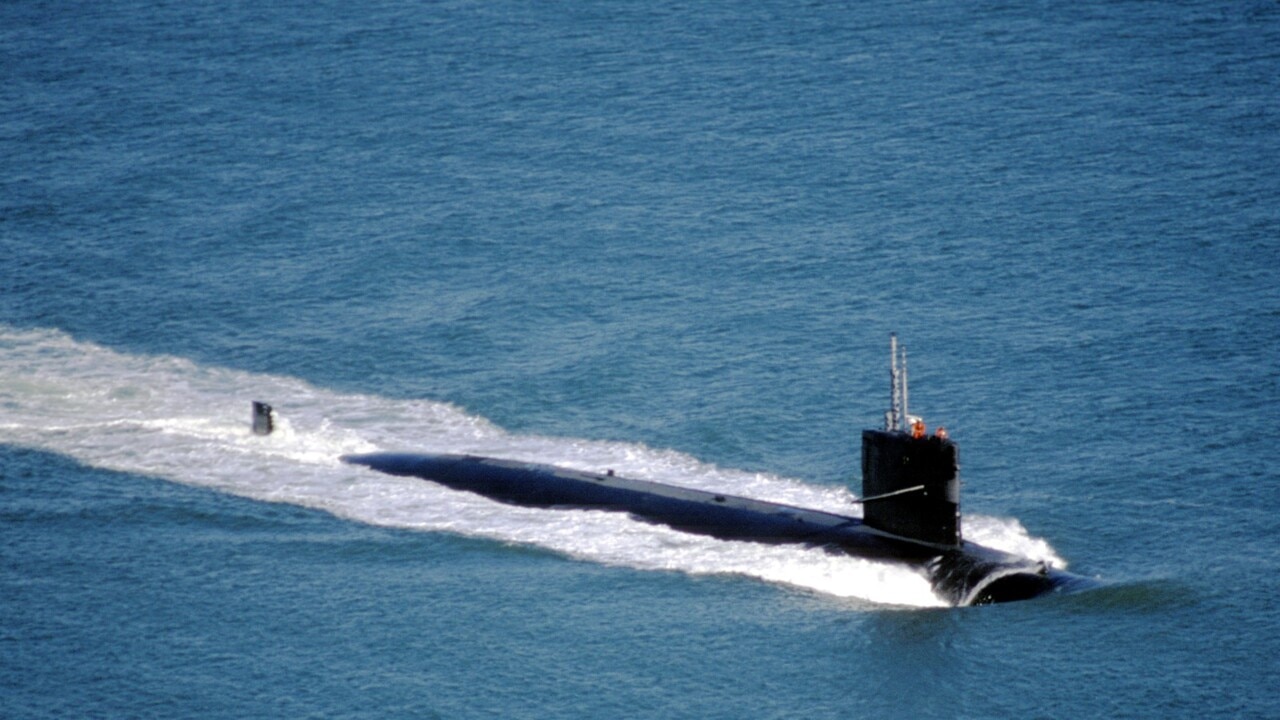Corroding subs raise capability fears
Half of the nation’s Collins-class submarines are out of service amid unexpected corrosion problems with two of the ageing boats.

Half of the nation’s Collins-class submarines are out of service amid unexpected corrosion problems with two of the ageing boats, prompting capability concerns and fresh questions over plans to extend the fleet’s life by a decade.
The commonwealth’s submarine maintenance corporation, ASC, revealed on Friday three of the navy’s six Collins boats were in maintenance – the first time that has occurred since 2012.
The opposition said the lack of availability was “a disastrous setback for Australia’s submarine capability”, and undermined trust in the government’s ability to deliver the AUKUS submarine program.
ASC managing director Stuart Whiley said HMAS Sheean – one of the youngest of the Collins boats – was out of the water at South Australia’s Osborne shipyard with corrosion in weapons and exhaust areas that had not previously been encountered.
One of the oldest Collins boats, HMAS Farncomb, was undergoing maintenance at Western Australia’s Henderson shipyards with “very different” corrosion issues, Mr Whiley said. A third submarine, HMAS Rankin, was tied up at Osborne ahead of a two-year “full cycle docking” maintenance period, he said.

Mr Whiley said the corrosion was in hard-to-reach places and repair works were yet to commence. “You have to basically remove all the corrosion. So you have to grind that, then replace the metal you have removed … by welding techniques,” he said, under questioning by opposition foreign affairs spokesman Simon Birmingham.
“Then you have to machine the weld to effectively get the tolerances to fit for the equipment that then goes on to it. And these are in fairly difficult, unique places to do.”
He said a testing process would have to be carried out after the repairs to ensure integrity.
HMAS Farncomb is not due to re-enter service until October, and HMAS Sheean will be out of the water until at least the end of the year.
The problems have emerged ahead of a high-risk program of upgrades to extend the life of each Collins boat for another 10 years to avoid a capability gap before the navy’s promised nuclear submarines arrive.

The minister responsible for ASC, Finance Minister Katy Gallagher, said the corrosion issues had not been brought to her attention until they were raised publicly on Friday. “No, it hasn’t. But it would not normally be, I wouldn’t have thought. It would come through Defence,” she said.
Senator Birmingham said the problems being encountered with the submarines should have rung alarm bells across the government, but had instead been met with indifference. “The Albanese government is showing an appalling lack of urgency and disinterest in the availability of our critical defence assets,” he said.
“Astonishingly, the Labor’s minister responsible for ASC didn’t even know of these major gaps in our defence capability and said that she wouldn’t have expected to be told.”
The government has been warned in a classified report that the $5bn life-extending upgrades present major challenges and are not guaranteed to succeed.

The report by former US Navy deputy assistant secretary Gloria Valdez warned ASC lacked the design and engineering experience to undertake the “life of type extension” works, and recommended the boats’ original Swedish designer, SAAB Kockums, be given a larger role to ensure the project’s success.
The six Collins-class submarines were originally due to retire progressively from 2026. Under the new plan they are all due to undergo two-year refits, extending their lives until 2038 for the first boat and 2048 for the last.
Defence analyst Marcus Hellyer said the corrosion revelations showed the boats “aren’t going to make it”.
“I don’t think they’re going to make it out of the 2030s. And sometimes I wonder if they’re going to make it out of the 2020s,” he said.






To join the conversation, please log in. Don't have an account? Register
Join the conversation, you are commenting as Logout